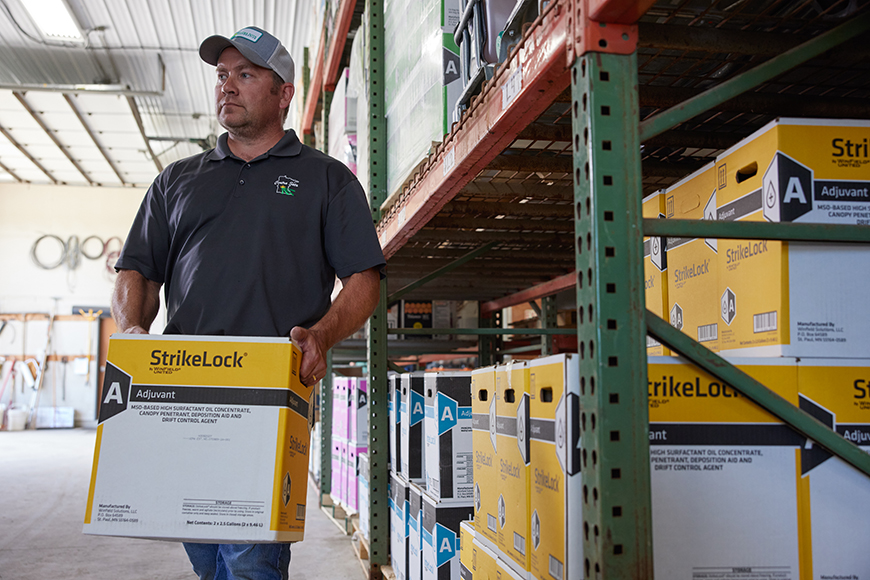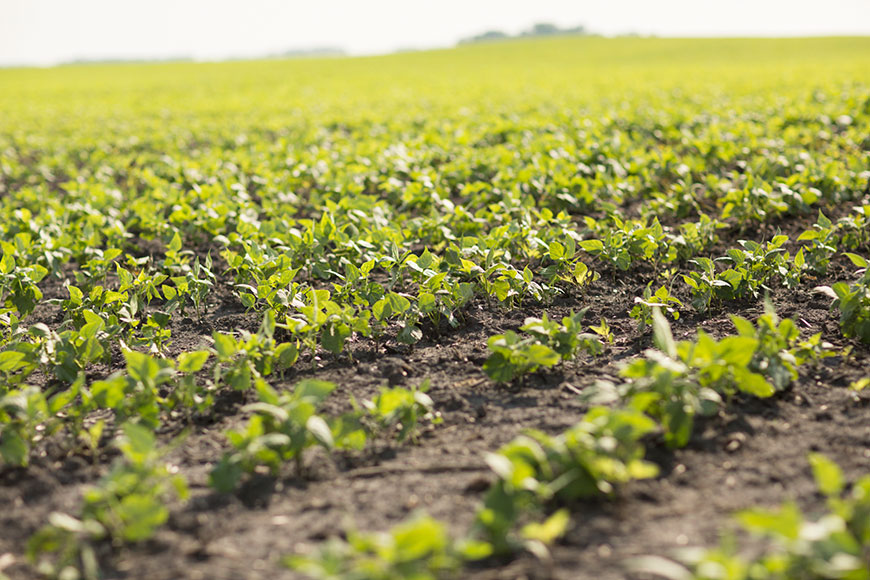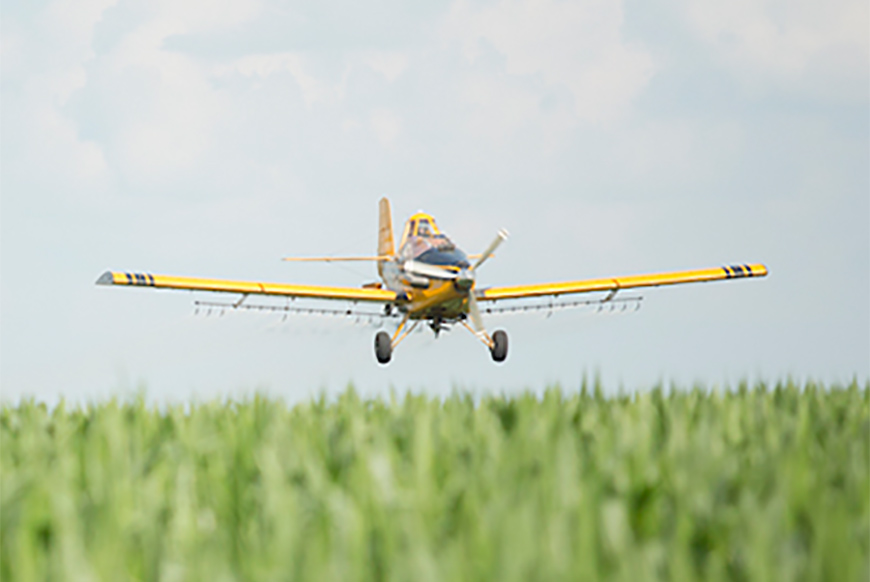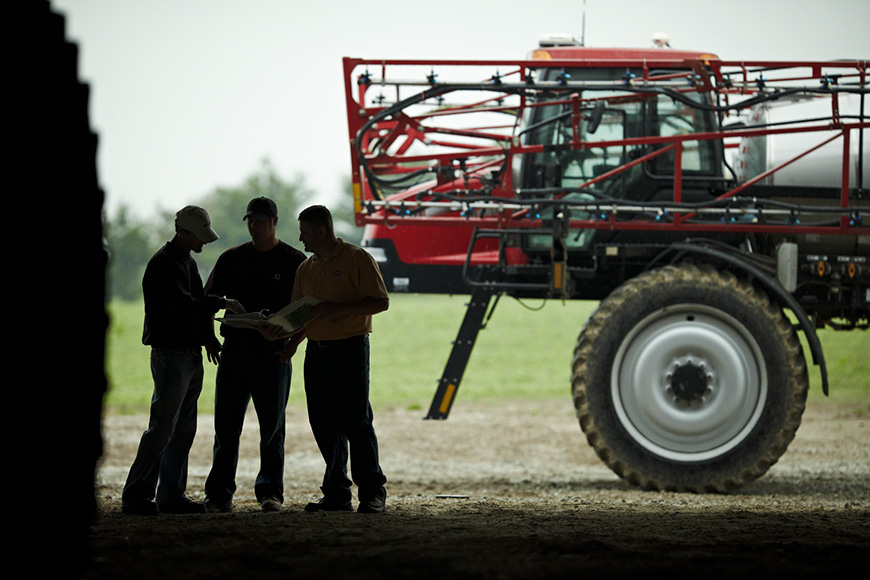3 Steps to a Successful Fall Burndown Application

If conditions in your area allow you to make a fall burndown application, it can make the spring a little easier from a weed management perspective. Applying in the fall allows you to target frequent winter annuals with herbicides at the start of their life cycles, before they grow larger and more difficult to control. This also reduces the number of host plants for insects and even diseases in certain climates. Post-harvest herbicide applications support soil drying and warming in the spring, especially in no-till fields, which can facilitate conditions for earlier planting. Here are some of our top tips to get the most from your fall burndown application.
Identify the weeds in your fields
This seems like a no-brainer, but I can’t stress how important proper weed identification is to ensure effective weed control. Some chemistries work better on certain species than others, and in order to choose the right products, you need to know what weeds you’re targeting. Common weeds like marestail and Palmer amaranth are easy to recognize, but others can be more challenging to identify. It will pay to take the time to confirm weed species in your fields to ensure you’re spending money on the products that are most effective for control.
Apply the right products and consider field conditions
Most fall burndown programs include glyphosate, along with either 2,4-D or dicamba plus residual herbicides. Residual products, including Valor®, Sharpen® or the metribuzin-based Dimetric® herbicides, are important components of a fall burndown application because they can help control small-seeded winter annuals that may become more difficult to manage in the spring.
While fall can be a good time to apply herbicides, you need to pay attention to field conditions to get effective control. When temperatures drop below 40 degrees, weeds won’t metabolize and translocate herbicides as well as they do at warmer temperatures and weed control could be limited. In general, weeds have greater herbicide uptake at temperatures of 60 degrees or above. Early October through late November typically present these kinds of optimal conditions for herbicide applications, but of course timing varies based on region, crop type and weather conditions.
You should also keep in mind your field’s soil type, because you may need to adjust herbicide application rates accordingly. Every choice, including the selection of herbicide active ingredients, will impact the future of your field so don’t forget to consider next year’s crop when making decisions.
Add an adjuvant to improve herbicide performance
Adding the right adjuvant to your tank mix can mean the difference between average and excellent weed control. Adjuvants help get more active ingredient to the target weed and can help enhance herbicide performance. Class Act® NG® adjuvant is a good option for use with glyphosate because it combines ammonium sulfate for water conditioning with a nonionic surfactant and antifoaming agent.
As temperatures begin to drop, a plant’s cuticle layer thickens, and it isn’t able to translocate herbicides as efficiently. Cool fall temperatures make methylated seed oils (MSOs) a good option because they can help herbicides infiltrate that waxy cuticle to get more active ingredient into the weed. Destiny® HC adjuvant is an MSO adjuvant that mixes with glyphosate well and is an effective option for fall burndown applications. Another option as temperatures cool is StrikeLock® adjuvant, which also helps reduce drift to keep herbicides on target.
Fall is a busy time of year, but if you’re able to prioritize a burndown application, it can mean cleaner fields and fewer headaches in the spring. There are many benefits to fall burndown applications beyond just reliable weed management, including reduced risk for detrimental insects and diseases and the potential for earlier planting. For more information on fall burndown products for your acres, speak with your WinField United retailer.
All photos are either the property of WinField United or used with permission.
© 2024 WinField United. Important: Before use always read and follow label instructions. Crop performance is dependent on several factors many of which are beyond the control of WinField United, including without limitation, soil type, pest pressures, agronomic practices and weather conditions. Growers are encouraged to consider data from multiple locations, over multiple years and to be mindful of how such agronomic conditions could impact results. Class Act, Destiny, Dimetric, NG, StrikeLock and WinField are trademarks of WinField United. All other trademarks are the property of their respective owners





